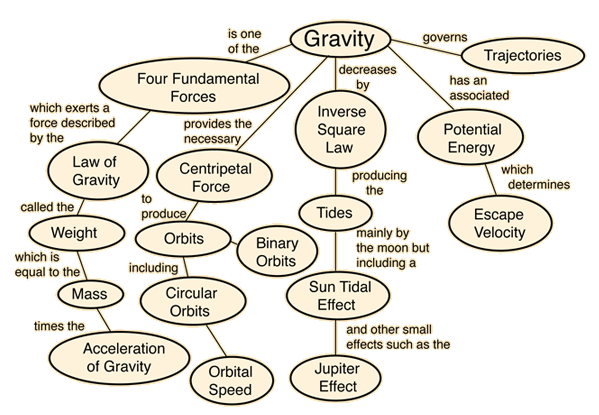Gravity
Gravity is the weakest of the four fundamental forces, yet it is the dominant force in the universe for shaping the large scale structure of galaxies, stars, etc. The gravitational force between two masses m1 and m2 is given by the relationship:

This is often called the "universal law of gravitation" and G the universal gravitation constant. It is an example of an inverse square law force. The force is always attractive and acts along the line joining the centers of mass of the two masses. The forces on the two masses are equal in size but opposite in direction, obeying Newton's third law. Viewed as an exchange force, the massless exchange particle is called the graviton. From Einstein's treatment in general relativity, gravity is associated with a curvature of space-time and changes in mass configuration can produce gravitational waves.
The gravity force has the same form as Coulomb's law for the forces between electric charges, i.e., it is an inverse square law force which depends upon the product of the two interacting sources. This led Einstein to start with the electromagnetic force and gravity as the first attempt to demonstrate the unification of the fundamental forces. It turns out that this was the wrong place to start, and that gravity will be the last of the forces to unify with the other three forces. Electroweak unification (unification of the electromagnetic and weak forces) was demonstrated in 1983, a result which could not be anticipated in the time of Einstein's search. It now appears that the common form of the gravity and electromagnetic forces arises from the fact that each of them involves an exchange particle of zero mass, not because of an inherent symmetry which would make them easy to unify.
|



